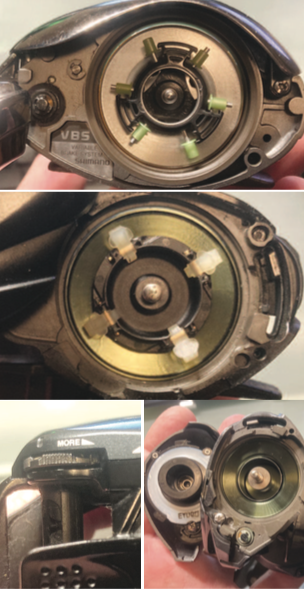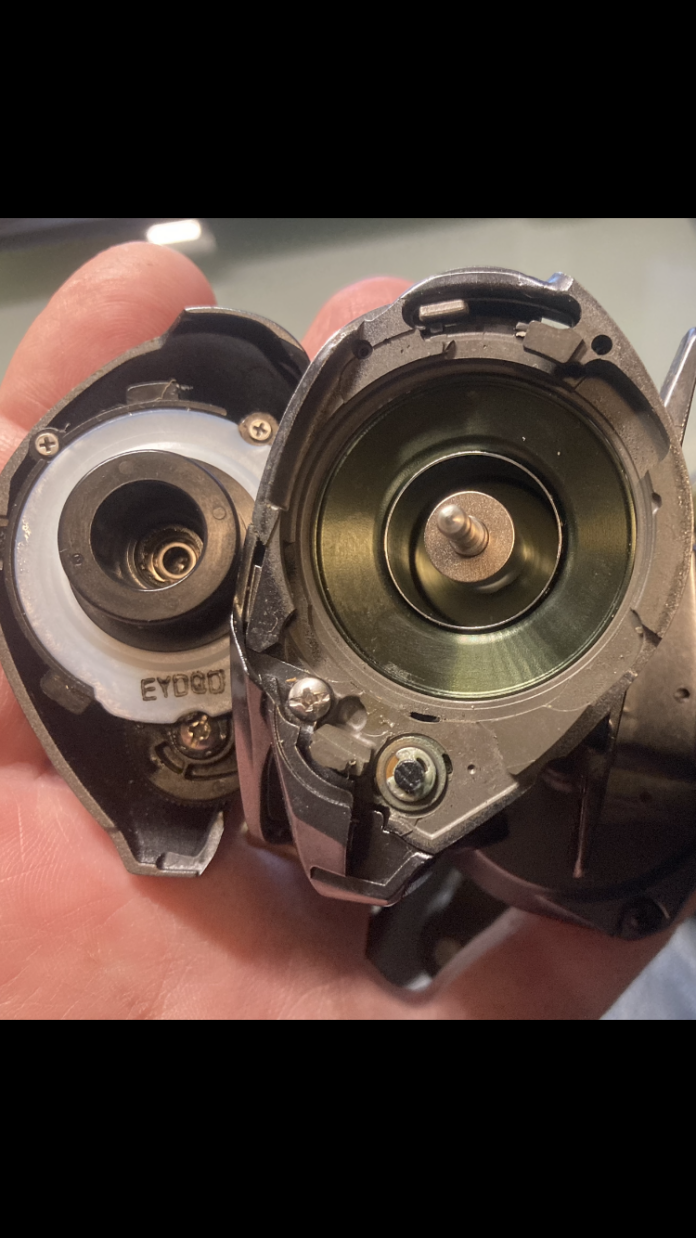BY ROB MAGARGAL
Recent advancements in the fishing industry have pushed the limits of technology like no other time I can remember. I am not just speaking of new boat accessories. We all know about Spot-Lock, right? If you don’t, you need to before you think about buying a trolling motor. Just Google “Spot-Lock troller.” You’ll have enough reading material and videos to view to last a month.
Then of course, the idea of electronics with Pan Optics. This one is a bit tricker as only one company had it. They created it and for 3 years everyone else looked in on them from the outside. It’s also no secret about Garmin and Lowrance and their battles in court over the past few years. No need to go too deeply into who did what and why and who got upset — the end result was great for the industry.
Both Garmin and Lowrance signed a declaration, or a pact of sorts, for shared technology, meaning they’ll not totally keep under wraps what they have brewing. They’ll work closer together versus apart. They found that to be the better choice. Or maybe the lawyers did? Either way I know my understanding after reading about it is very simplistic, however, you get the idea.
The big three sonar companies will have the Pan Optics/live scope/Livesight type front sonar available this year: Lowrance, Garmin and Humminbird. These are high-dollar items to be sure. So maybe that’s too far out for today, it is for me. What we have to remember is this. What happens when new technology comes out? Yes, what was once all the rage slips a few notches. It’s not that it’s not amazing technology, it’s that the new and improved stuff is out. This means the lower priced units start to see the advancements they’d never have seen without it. As an example, do you remember when getting a color graph was huge? I do. Now 98% are color with the option to be full grey scale old school style. How funny is that?
My guess is many of the $500-and-less units start to have much better GPS with SIM cards and mapping technology. Wi-Fi. Better side scan. Truer down scan. It’s how this usually works. Possibly even touch screen, yet that may still be a little while.
With electronics, they can be extremely expensive, however, there are many items that fit well into the budget of most fishermen.
Let’s take a look at rods and reels. For many, rods and reels are very much a prized part of fishing. They are the gear they’re holding all day. They mean more than the electronics. They mean more than the trolling motor. To be truthful, they mean more than the boat to most fishermen.
You can’t go fishing without a fishing rod and reel. You can be in the nicest boat with the best of the best equipment. Guess what? Without a fishing rod and reel you’re just a boater. Or even worse, a pleasure boater. Ouch… So, we have to put some focus on that for sure.
It was just a couple short years ago when there was no chance of getting a reel with digital braking. Those reels were designed for the elite fishermen. When many looked and saw someone with one they
thought, “Wow, they have a digital casting reel. I wish I had one.”
Say what you want about them, but they work. Hey, you guys who can cast the lightest of baits on your casting reel and never backlash or backlash very little… this may not be for you. You’re a pro, right?
The DC reels though are great for many applications of fishing. Fishing into a stiff wind, a DC reel shines.
Flipping and frogging. How many times have you had serious over runs when flipping and pitching tules? You’re shooting for the back section and that darned broken, bent tule just touches that bait and bam, bird’s nest. Come on, if you flip or pitch, you know exactly what I am speaking of. The DC reel helps that big time. Night fishing. How many have stopped using casting reels at night, if just from fear of backlashing.
This amazing braking technology is now down at the price point of the everyday fishermen. I am not sure many realize you can pick up a DC reel at about $179 in today’s market, brand new. These reels were $500 or $600 not all that long ago.
And just like the electronics, the higher quality materials are making their way down to the reels. This means that a $99 reel today is closer to the $250 reel of 10 years ago. Better gearing. Stronger frames. Much tighter tolerances in machining. Manufacturers realized that a reel needs to fish well. How important is the perfect handle on your reel? It is very important to me. They have realized the handle needs to match the gear ratio and the grips need to be comfortable and spin well. All of this was not in the price range of what we see today.
The idea of buying a lower-level reel and needing to upgrade bearings right away is basically a thing of the past. I’m not saying to stop upgrading your gear. That’s just plain fun to do. It’s that today you can truly purchase the reel and fish without a bunch of upgrades before you even hit the water.
I was able to get a brand new swimbait reel recently. Not a Conquest 300 at $549. This is a Curado K 300. It retails at $199. I have done nothing to it, less fish it. No flushing bearings and recoiling. No bearing upgrades or handle upgrades. I have had the reel few months now and fish it every weekend. It is an amazing reel, from the box to the lake — kind of like from farm to table. I adjusted the brakes where I liked them as well the side spool tension knob, and done. It’s become a go-to swimbait reel for me.
Spools are getting lighter on casting reels. That means it takes less inertia to get them going during the cast and keep them going after the cast. Lighter baits are now castable on many of the reels today. Lighter, meaning 1/8-ounce. That’s excellent.
Ergonomics are far nicer than in years past. A reel is in your hands all day. It needs to fit well in your hand to want to keep using it. Casting reels use to be 9 ounces on the lower end. It’s not unheard of to see 6.8 or 7.5 ounces now. That is the new normal. Losing an ounce or two off the weight of a reel is massive. Losing 15 to 20% body weight? It matters.
Spinning has come light years forward too. It’s almost scary now with spinning reels. The rotor balance, spool lengths as well spool sizes and depths. Body/frame sizes. Materials the frames are made from. There are some spinning reels that are so light weight you feel you’ll break them on hook sets. But of course, they’re ultra-strong. Yet, it fools the mind.
Having the right reel, it’s why they are so prized.
This is where we are today with reels and now at prices that we can actually afford.
Rods have followed suit with the reels. They have become more responsive, lighter and stronger. The $500 rod is still there. That buyer is there always. And I will say from serious experience. A $500 rod is better, much better than even a $300 rod.
Rod technology has changed and some of what makes a top-quality rod amazing has made its way to the lower levels. Where the top-quality rod still shines is from the blank. They are just more expenive. That may never ever find its way all the way to the lower level.
What has made its way down? The outer wraps on the black. They are very important. They help in casting accuracy. How fast can the rod get back to true and straight after the heavy load up during the cast as well when line is feeding through the guides. That matters and is considered the action of the rod. I see fishermen complain about casting and backlashing. Many times, it’s the fishing rod that causes the issue. That wobbling back and forth during the cast makes the line rub on the guides as it leaves the rod and that in turn makes the spool over run. Or it causes what I call a “double clutch” of the reel. That’s where the line is being pulled off the spool twice and at different powers. That happens from the back recoil of the rod at the beginning of the cast. This all happens very quickly and can truly only be found by casting the rod.
The tip quality has improved for overall sensitivity. The tip is the first point of contact when feeling a strike. The guides have improved, which allows for heavier braided lines to be used without damaging the guide. The materials the handle is made from has really improved. From Ci4 with Shimano to ultralight composites of other top brands. Handles are no longer clubs. A handle from a rod just 5 short years ago has improved tenfold.
The idea of the quality rod, I can’t speak highly enough of that. My call is getting the lower-level reel at $150 and picking up the $300 plus fishing rod. As mentioned, the reels have really improved to a point that lower level is not what it once was.
The rods, however, yes, they have improved, still not to the level I feel where using $300 reel on a $125 rod makes sense. You are truly doing a disservice to your quality of fishing.
This season coming up, if you think of it in seasons, take a look at the 20 to 30 reels you have from 1998. Yes, they’re nice. They’re not like new. They do not fish like new. They’re just something you’re used to. Do yourself a plus. Sell a few of the old rods and reels or donate a few to a kid’s clubs and buy some new gear.
Once you have a few new additions to the quiver, you may be asking yourself what took so damn long?




